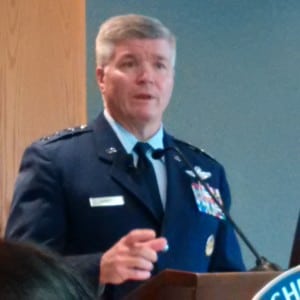
The second phase of the U.S. Air Force’s light-attack aircraft experiment was set to begin May 7 at Holloman Air Force Base in New Mexico, according to service officials.The second phase “is starting today out in the desert,” said Lt. Gen. Jerry Harris Jr., Air Force deputy chief of staff for strategic plans and requirements. The Air Force has said that the three-month experiment will involve “the two most promising” aircraft it used in last year’s flight demonstration: the AT-6 Wolverine…

 By
By 











